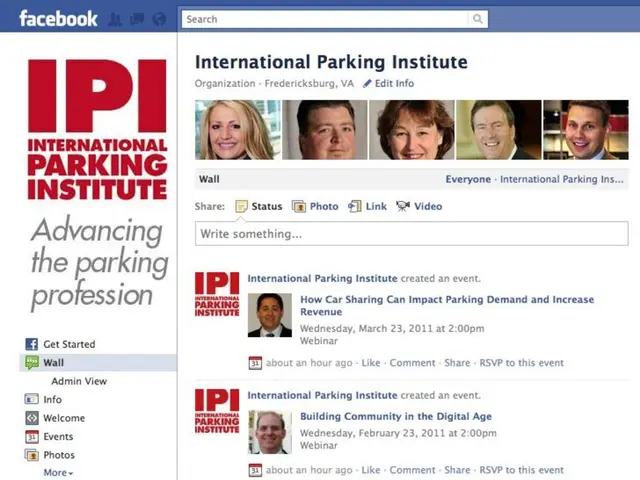The Conflict Between SEO Practitioners and Digital PR: The Challenges Posed by Cost-Based Link Arrangements
Digital Public Relations (Digital PR) is a modern approach to building and elevating a brand's online reputation and visibility. This strategy involves engaging with digital media, influencers, and online communities strategically to shape perceptions and foster relationships. The ultimate goal is to generate media coverage across various platforms while creating a broader audience reach and strengthening the brand's digital presence.
In the realm of Digital PR, one key element is the cultivation of a positive online narrative that aligns with a brand's core values and business objectives. This is achieved through targeted outreach and compelling content, which secures valuable backlinks and media placements, improving a brand's search engine performance. Integrating SEO strategies into Digital PR campaigns has become essential, as they work synergistically to boost online visibility.
The relationship between Digital PR and SEO has been influenced by the rise of data-driven and performance-focused approaches in the digital marketing world. One such trend that has been baking in Digital PR is the increasing adoption of cost-per-link (CPL) pricing models, which quantify the value of content placements based on the backlinks they generate. While this approach is intended to simplify the measurement of the effectiveness of a Digital PR campaign, it has raised concerns about the integrity and authenticity of online storytelling, which may compromise the original purpose of Digital PR.
As Digital PR adapts to an ever-changing digital landscape, understanding its relationship with SEO is crucial. This synergy can significantly impact a brand's visibility, audience engagement, and overall success in the competitive digital marketplace. In this piece, we will delve deeper into several aspects of this relationship, focusing on the impact on creativity, innovation, and quality in Digital PR strategies.
Balancing Creativity and Quantity: A Tale of Two Approaches
The focus on cost-per-link can potentially lead to a narrow approach that prioritizes quick wins and predictable tactics, stifling creativity and originality in Digital PR campaigns. When cost-per-link is treated as the primary metric, there is a risk that teams will gravitate towards safe, formulaic campaigns, investing minimal resources in experimentation or thoughtful content creation.
However, when cost-per-link is used as one metric among several and teams are encouraged to take risks and push boundaries, it can stimulate innovation and fuel the development of impactful, creative, and groundbreaking ideas. By striking a balance between cost-per-link and creativity, campaigns can maximize their potential and generate tangible results that benefit both the brand and the audience.
Sustainable Effectiveness Through Innovative Strategies
Effectiveness in Digital PR is not solely dependent on the number of links but on the quality, authority, and relevance of those links. An overemphasis on minimizing cost-per-link might lead to the proliferation of low-quality links that have little impact on the brand's reputation or search engine rankings, thus diminishing the overall effectiveness of the campaign.
On the other hand, digital PR campaigns that produce a high volume of quality links tend to do so quickly after launch, suggesting that true effectiveness—measured by both link volume and quality—is best achieved through creative, original, high-quality content that captivates audiences and generates additional opportunities for engagement and link acquisition.
Building Momentum Through Creative Content
Effective Digital PR campaigns build momentum, accelerating the rate at which they generate links as they gather traction. The most successful campaigns are characterized by their ability to produce unique, innovative, and timely ideas that resonate with their intended audience. These elements inspire engagement, attracting media coverage and ultimately leading to a high volume of quality links.
Although cost-per-link can be a valuable metric for budgeting and benchmarking purposes, over-reliance on it may compromise the quality, creativity, and innovation of Digital PR campaigns if cost considerations take priority over the objectives of creating authentic, meaningful relationships with audiences.
For a truly effective and impactful Digital PR strategy, teams must balance quantitative goals such as cost-per-link with a commitment to creativity, originality, and quality-a combination that fosters a dynamic, agile, and innovative approach to Digital PR.
- In the realm of Digital PR, innovation can be fostered by balancing the focus on cost-per-link with a commitment to creativity, originality, and quality, rather than treating cost-per-link as the sole metric.
- Effective Digital PR campaigns often produce a high volume of quality links, but an over-emphasis on minimizing cost-per-link could lead to the proliferation of low-quality links, ultimately diminishing the overall effectiveness of the campaign.
- Successful Digital PR strategies are characterized by their ability to produce unique, innovative, and timely ideas that resonate with their intended audience, leading to a high volume of quality links and accelerating the rate at which they generate links.
- While cost-per-link can be a useful metric for budgeting and benchmarking purposes, over-reliance on it may compromise the quality, creativity, and innovation of Digital PR campaigns if cost considerations take priority over the objectives of creating authentic, meaningful relationships with audiences.








